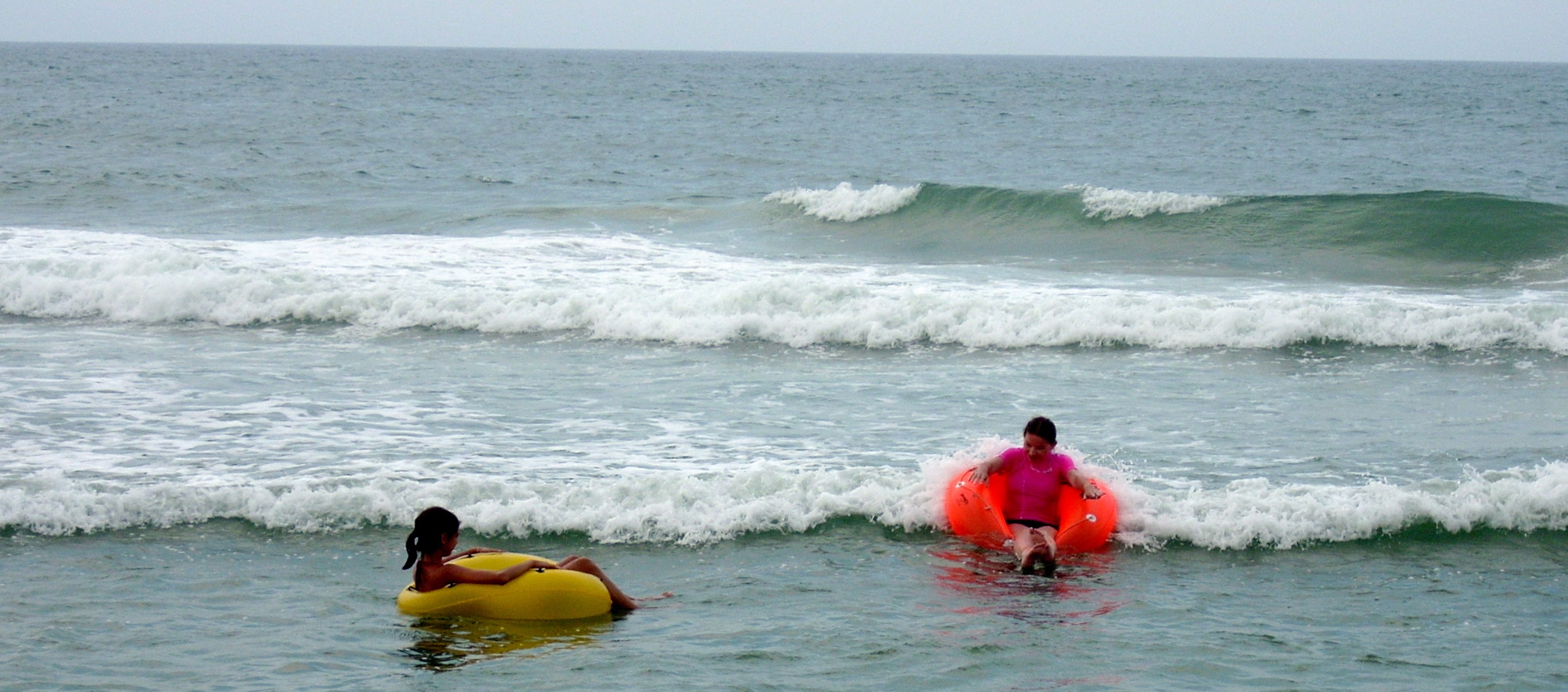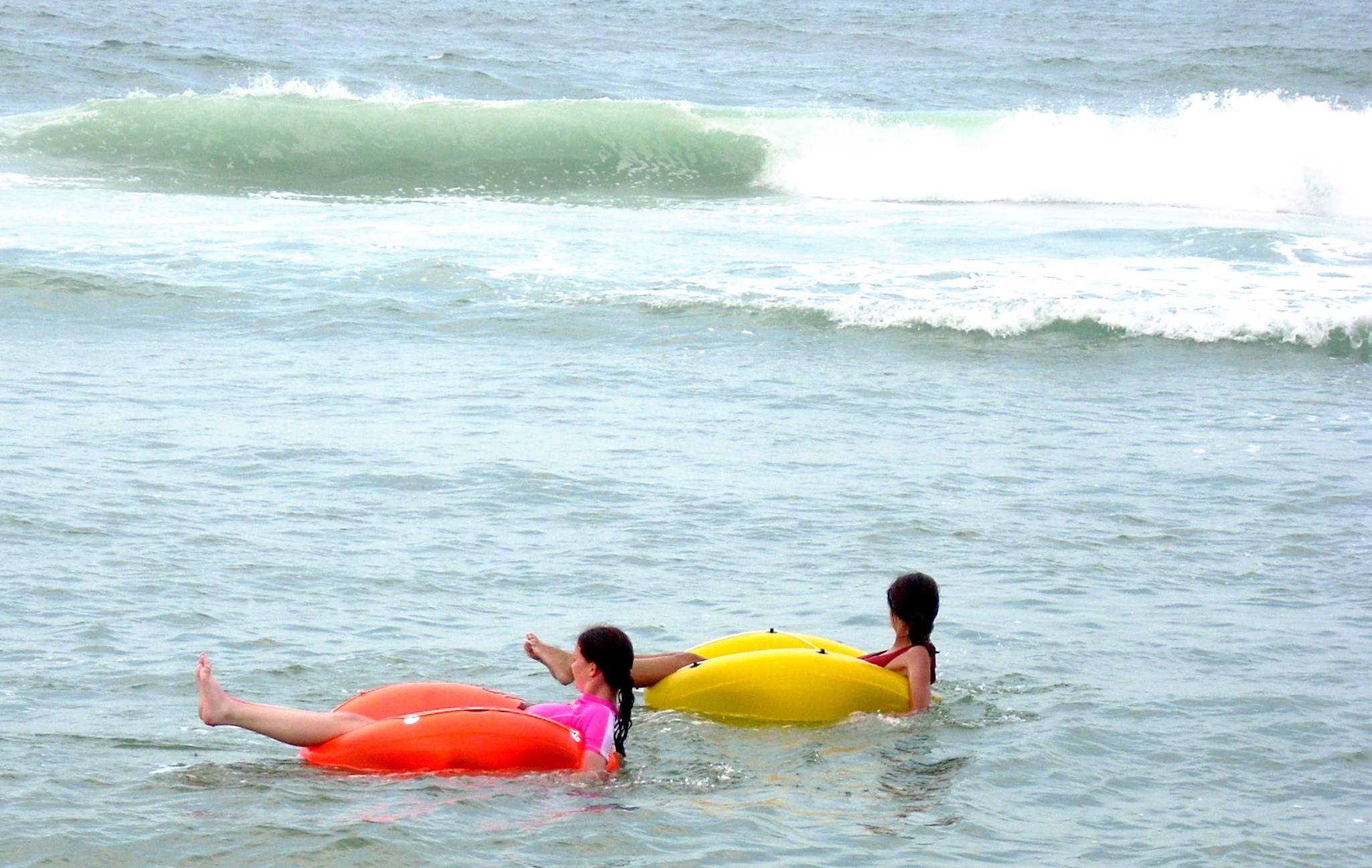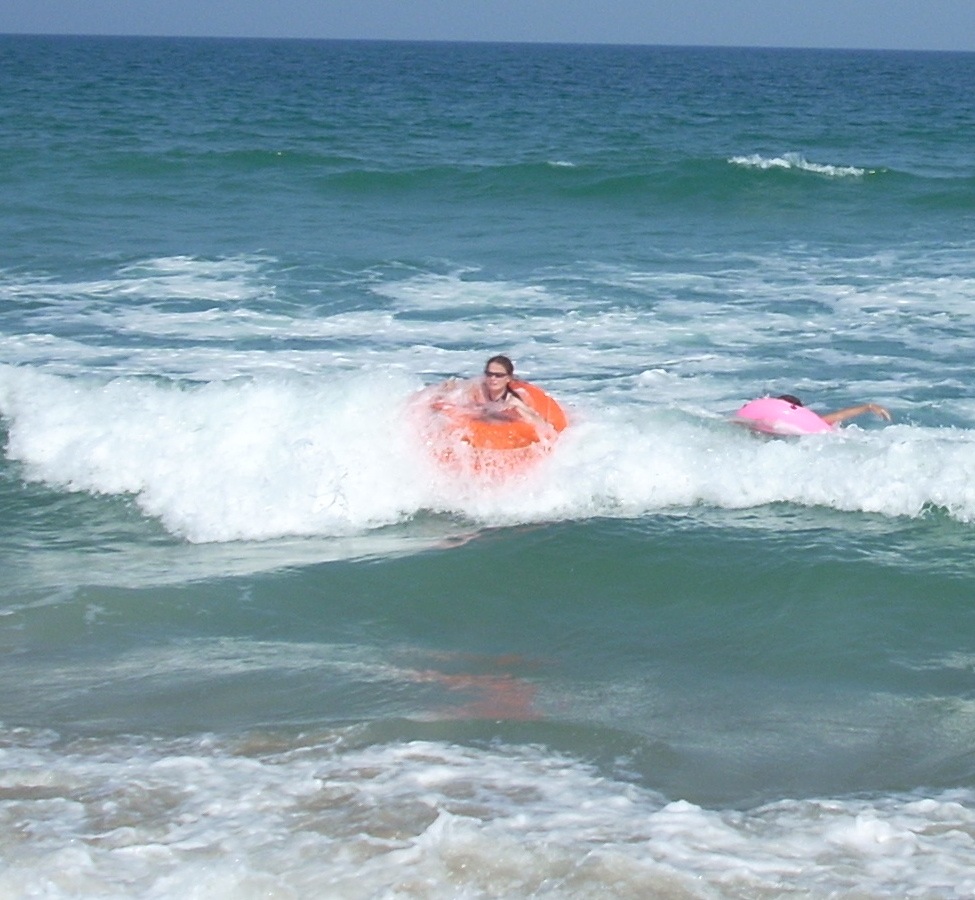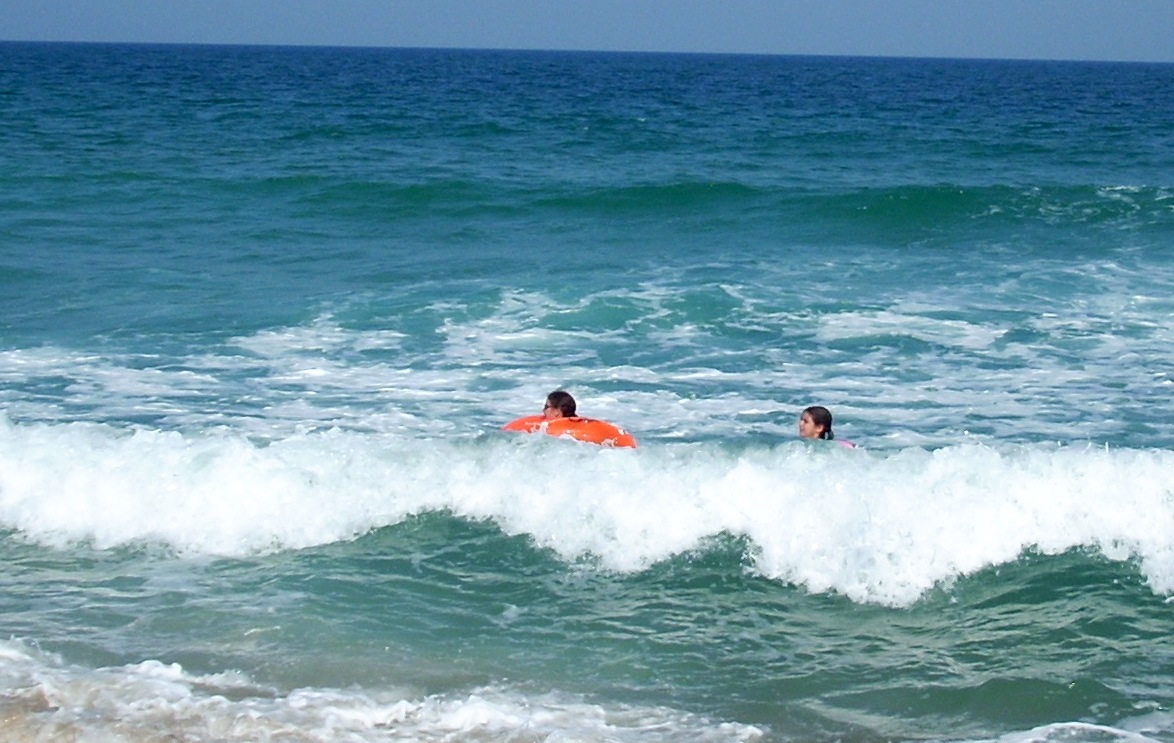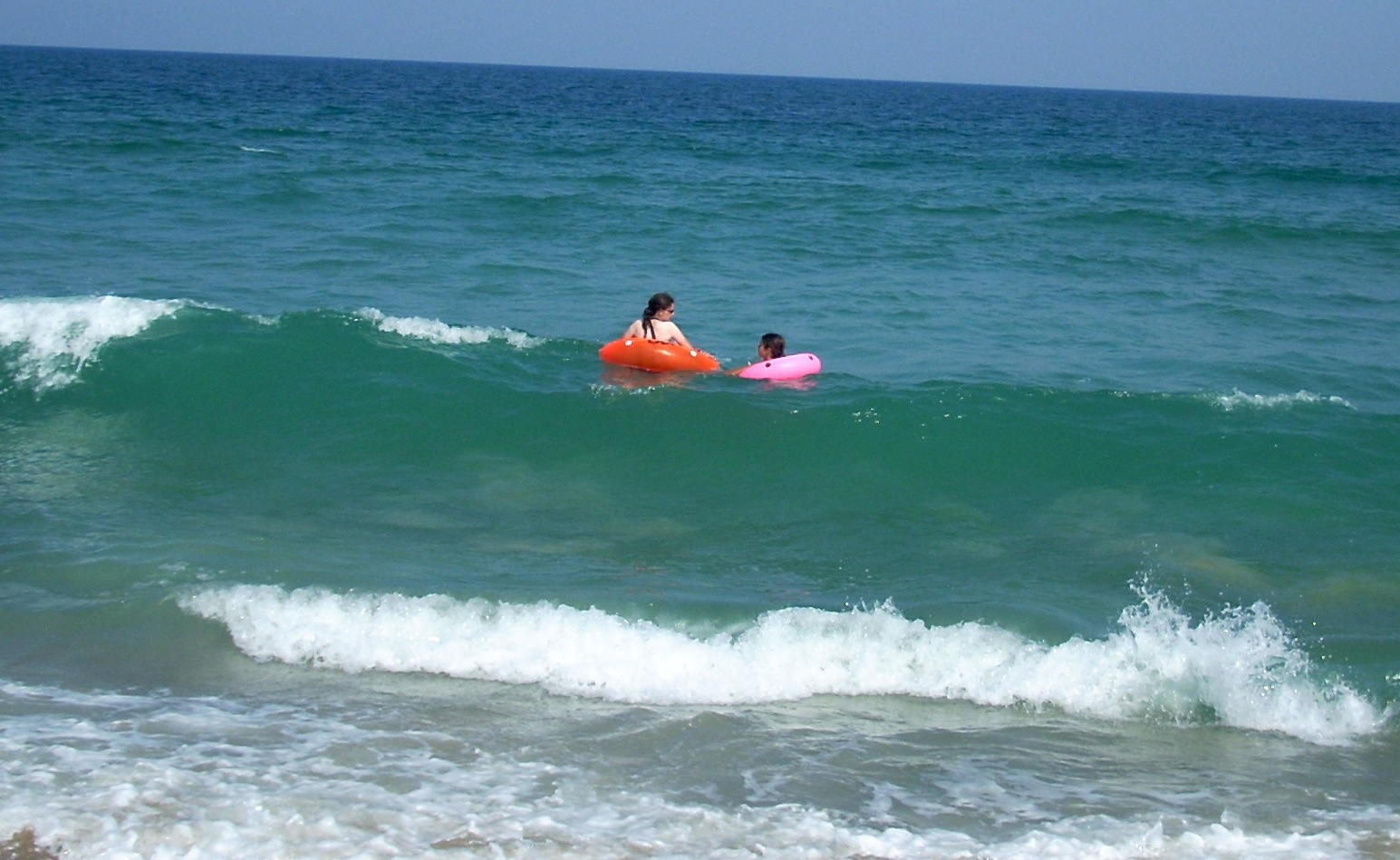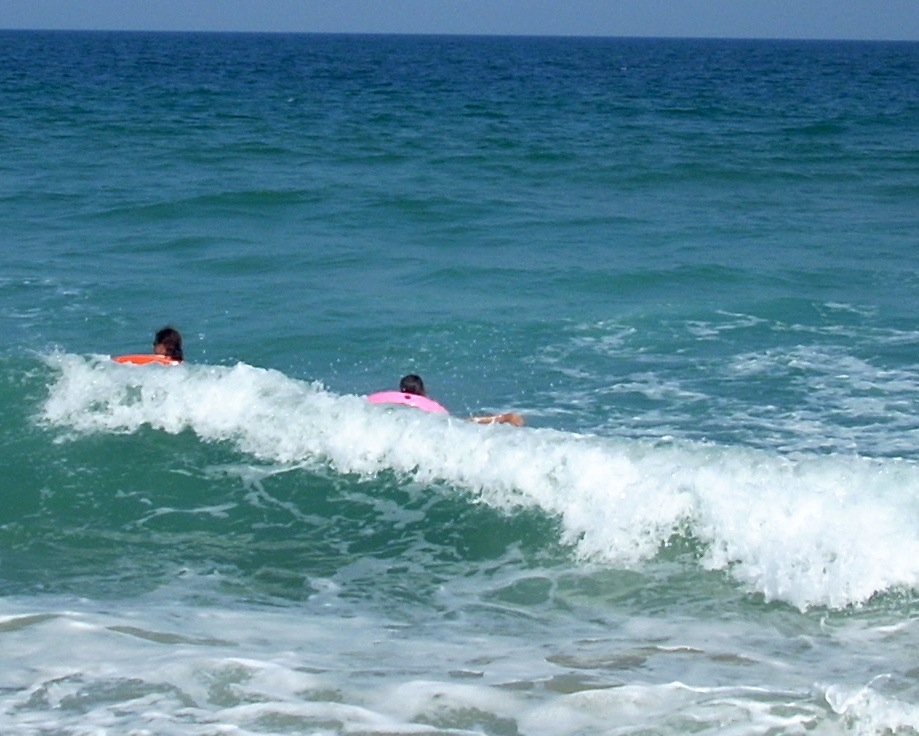Tubing can be a lot more complex than it might appear. The girl above left in the orange tube is surfing the crest of the wave just as a boarder might do. As long as she keeps her weight in front of the crest, she can ride the wave all the way in to shore. The water on the front of the wave is slipping downhill. She needs to be riding that downhill slope faster than the wave is moving forward. If she slows down, she will "ride up" on the wave and pass over the crest, either being dumped upside down as it passes under her, or dropping suddenly down the backside.
The two girls above right are cruising above the bar watching the outside break line. They are in sort of a valley between break lines. Inside of them, toward the photographer but out of the photo at bottom, is the shore break (see photos and text below). If they drift out or in, they will get involved in the vigorous wave action, but as long as they stay positioned over the bar, they will remain in calm water indefinitely.
At right the girl at left is using the small pink tube, which allows her to ride in deep water with body below the surface. She can thus use her feet and legs to frog kick, turning the tube quickly or pushing it straight ahead. Having her feet and hands both available allows her to deal with the bigger waves out beyond the bar. Notice the girls are barely beyond the break line. They are not interested in paddling out toward the open ocean. They have just cleared the wave at the bottom of the photo and are positioning themselves for the large wave visible in the opper fourth of the photo. It will begin to break as it approaches the bar, and they have time to turn and kick vigorously to bring their forward speed up to that of the wave. They must match the wave's speed to catch it. If they do that, they can ride it all the way to shore. |
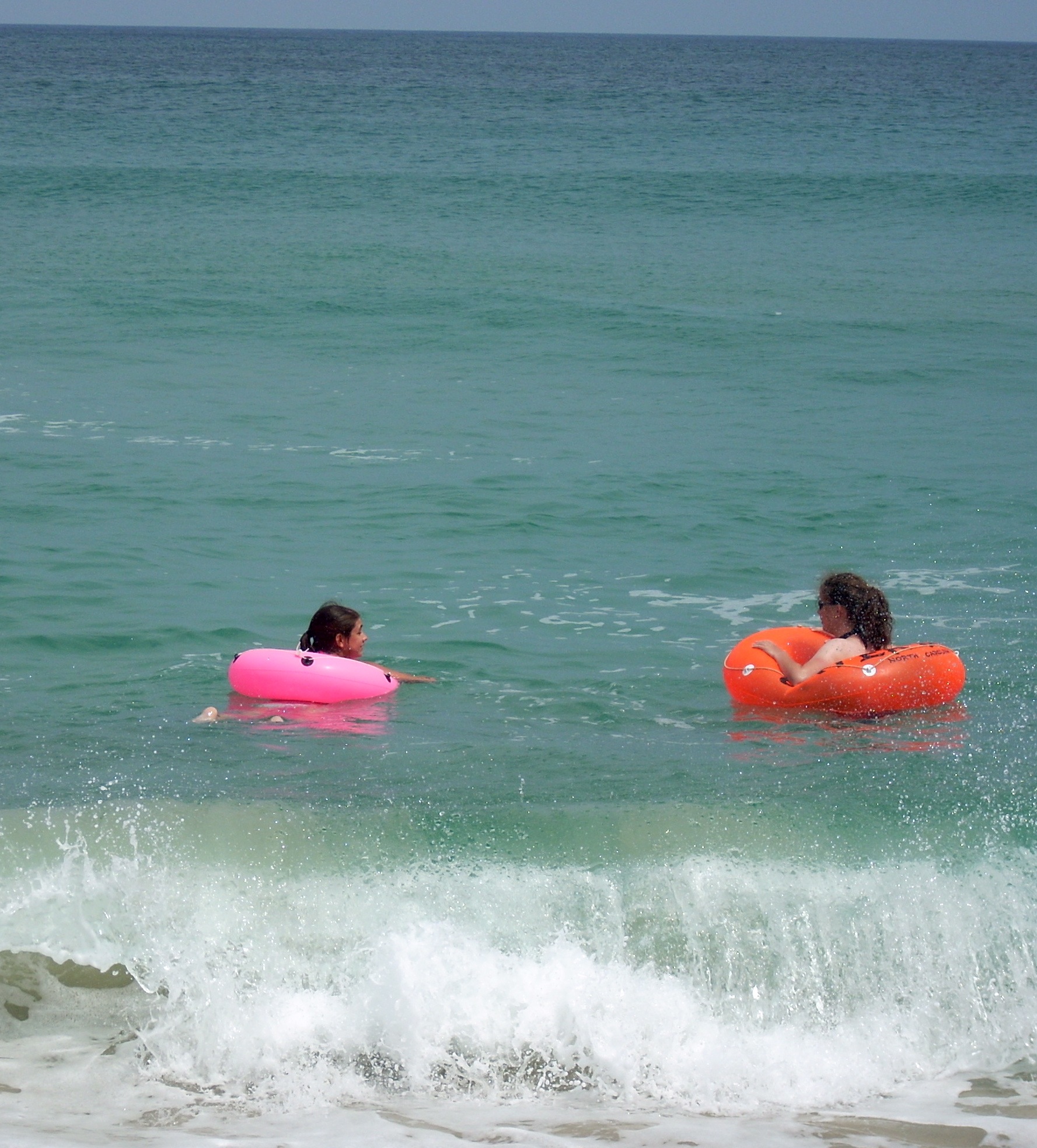 |
